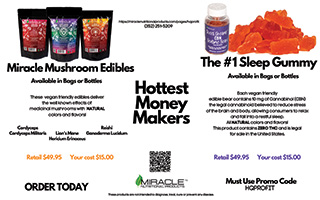Small businesses are always concerned with making a profit — now, in the face of a worldwide health crisis, they’re just concerned with how they’re going to survive.
The answer — or at least some serious help, comes in an emergency $2 trillion coronavirus stimulus plan. The legislation, known as the CARES Act, provides loans for small businesses and allow for payroll-tax deferment.
There are many questions small business owners and their employees have about the Act. Here’s a roundup of the answers:
What is the CARES Act?
The CARES Act is an acronym for the Coronavirus Aid, Relief, and Economic Security Act. President Trump signed the bill into law on March 27, 2020.
It is a $2.2 trillion economic stimulus plan, the largest in US. history. The Act will offer financial relief to individuals, small businesses, large corporations, state and local governments, and hospitals and health centers impacted by the COVID-19 pandemic.
What is the Paycheck Protection Program?
The Paycheck Protection Program provides SBA loans to qualified businesses, nonprofits, sole proprietors, and self-employed individuals.
What businesses are eligible?
Lenders will look to see if your business was in operation on or before February 15, 2020, paid salaries and payroll taxes for employees or paid independent contractors, and impacted by COVID-19.
The US. Chamber of Commerce put together a guide (https://www.uschamber.com/sites/default/files/023595_comm_corona_virus_smallbiz_loan_final.pdf) on eligibility, which includes the following:
You are eligible for a PPP loan if you meet one of the following requirements:
- A small business with fewer than 500 employees
- A small business that otherwise meets the SBA’s size standard
- A 501(c)(3) with fewer than 500 employees
- An individual who operates as a sole proprietor
- An individual who operates as an independent contractor
- An individual who is self-employed who regularly carries on any trade or business
Special rules that might make you eligible, include:
- A Tribal business concern that meets the SBA size standard
- A 501(c)(19) Veterans Organization that meets the SBA size standard
- If you are in the accommodation and food services sector (NAICS 72), the 500-employee rule is applied on a per physical location basis
- If you are operating as a franchise or receive financial assistance from an approved Small Business Investment Company the normal affiliation rules do not apply
How do I apply for a small business loan?
The SBA will administer the loans. Local lenders will determine eligibility and credit worthiness without requiring them to go through usual SBA channels to make the process faster.
- Treasury Secretary Steven Mnuchin said the loan process will be “very simple.” Businesses can go to SBA backed lenders, such as banks, credit unions, and financial technology lenders to apply.
Borrowers should be prepared to complete an SBA application and fill out addendums to provide required documentation. Information about the SBA loan process can be found on the SBA website.
When do loans become available?
U.S. Treasury Secretary Steven Mnuchin said on Sunday the emergency loan program will start on Friday, April 3. The White House is working with the Small Business Administration to accelerate the start of the program.
Mnuchin also said on Monday he hopes the White House will release instructions later in the day covering how small businesses can apply for loans, according to The Hill.
How much can I borrow?
Loans can be up to 2.5x the borrower’s average monthly payroll costs incurred during the year prior to the loan origination date. The maximum loan amount is $10 million.
For businesses not operational in 2019, the amount is determined by the average total monthly payroll costs incurred in January and February 2020.
Loans will be available during the period of March 1 through December 31, 2020.
What payroll costs are included?
The following information is from the U.S. Chamber of Commerce:
For Employers
- The sum of payments of any compensation with respect to employees that is a:
- Salary, wage, commission, or similar compensation
- Payment of cash tip or equivalent
- Payment for vacation, parental, family, medical, or sick leave
- Allowance for dismissal or separation
- Payment required for the provisions of group health care benefits, including insurance premiums
- Payment of any retirement benefit
- Payment of state or local tax assessed on the compensation of the employee
For Sole Proprietors, Independent Contractors, and Self-Employed Individuals:
- The sum of payments of any compensation to or income of a sole proprietor or independent contractor that is a wage, commission, income, net earnings from self-employment, or similar compensation and that is in an amount that is not more than $100,000 in one year, as pro-rated for the covered period.
What payroll costs are excluded?
The following information is from the U.S. Chamber of Commerce:
- Compensation of an individual employee in excess of an annual salary of $100,000, as prorated for the period February 15, to June 30, 2020
- Payroll taxes, railroad retirement taxes, and income taxes
- Any compensation of an employee whose principal place of residence is outside of the United States
- Qualified sick leave wages for which a credit is allowed under section 7001 of the Families First Coronavirus Response Act (Public Law 116–5 127); or qualified family leave wages for which a credit is allowed under section 7003 of the Families First Coronavirus Response Act
What is the annual interest rate?
Interest rates will be capped at 4%
What is the coverage period?
The covered period begins on February 15, 2020 and ends on December 31, 2020.
What can I use the loan for?
The loan can be used to pay for payroll (including paid sick leave, medical leave, family leave), healthcare premiums, insurance premiums, mortgage payments, rent, utilities, and certain debt obligations.
Is there any collateral required?
No collateral is required.
When is the first payment due?
Six months after origination date.
Will any of these payments be forgiven?
Yes, borrowers are eligible to have portions of the loan forgiven. The loan forgiveness cannot exceed the principal.
A borrower is eligible for loan forgiveness equal to the amount the borrower spent on the following items during the 8-week period beginning on the date of the origination of the loan:
- Payroll costs (using the same definition of payroll costs used to determine loan eligibility)
- Interest on the mortgage obligation incurred in the ordinary course of business
- Rent on a leasing agreement
- Payments on utilities (electricity, gas, water, transportation, telephone, or internet)
- For borrowers with tipped employees, additional wages paid to those employees
How could the forgiveness be reduced?
The amount of loan forgiveness will be reduced if there is a reduction in the number of employees or a reduction of greater than 25% in wages paid to employees.
What if I bring back employees?
If you bring back employees and restore wages by June 30, 2020, the amount of your loan forgiveness will not be reduced.
What if I have an Economic Injury Disaster Loan (EIDL)?
The Act designates that businesses that received funding under the “Paycheck Protection Program” are not eligible for EIDLs.




